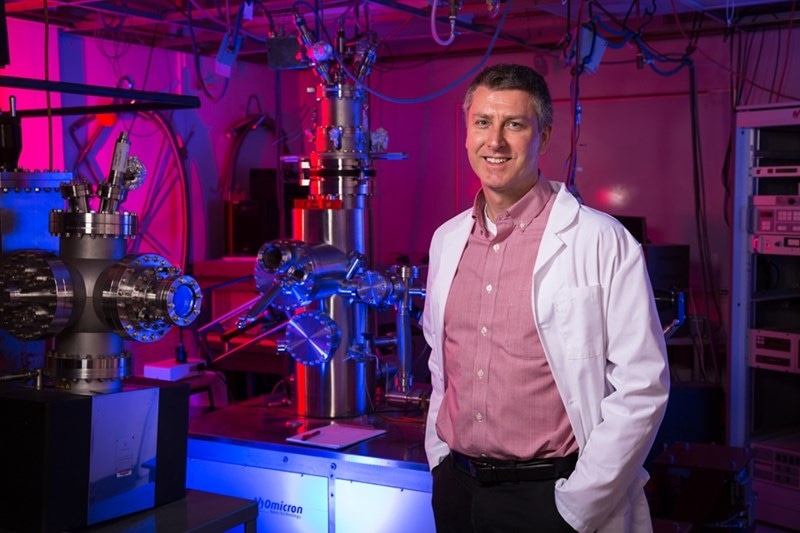Sep 14 2016
 Paul Thibado, University of Arkansas (Photos by Russell Cothren, University Relations)
Paul Thibado, University of Arkansas (Photos by Russell Cothren, University Relations)
A team of physicists, led by researchers at the University of Arkansas, have monitored spontaneous mechanical buckling in freestanding graphene with scanning tunneling microscopy, demonstrating it's potential as a new electronic power source.
The discovery improves the understanding of graphene, a 2D material that is just a single atom in thickness, and its potential role in the development of next-generation electronic devices.
The research findings were published in Physical Review Letters, the journal of the American Physical Society. The discovery was also emphasized on the society’s Physics news site.
The scanning tunneling microscopy used by the team produces images of individual atoms on a surface, to show the spontaneous mechanical buckling.
Paul Thibado, professor of physics at the University of Arkansas who led the study stated that the finding paves way for a new field of research - dynamic behavior of freestanding 2D materials controlled by scanning tunneling microscopy.
Freestanding graphene is constantly in motion. It moves up and down like a buoy bobbing in the ocean. The bobbing motion is intermittently interrupted when the material flips from looking like the inner part of a bowl to the outer part of the bowl – that high velocity, snap-through movement is known as mechanical buckling.
Paul Thibado, Professor, University of Arkansas
The research team discovered that the buckling movement compares to an occurrence referred to as a “Lévy flight,” named after the French mathematician Paul Lévy. A Lévy flight can be defined as a random walk process where long excursions happen with higher statistical probabilities than a standard system in steady random motion.
Lévy flights are widespread in biological systems and accurately replicate animal foraging patterns.
The occurrence has not been monitored at the atomic-scale with an inorganic system until this research, Thibado said, making it possible to estimate and manipulate long excursion events.
Buckling events in 2D materials hold the key to understanding the phenomenon of Levy flights.
Paul Thibado, Professor, University of Arkansas
Freestanding graphene’s nonstop motion, enhanced by the high kinetic energy of these random inversions, could be transformed into electrical current and used instead of batteries to power small electronic devices. There is a pressing need for the progress of power sources other than batteries, with the increase of wireless sensor networks that link up non-computer objects to the internet.
Such wireless sensor networks are referred to as the Internet of Things, such as a smart irrigation system that monitors and offers data on moisture levels of remote fields or running shoes that offer performance feedback to an athlete.
Surendra Singh, professor of physics at the University of Arkansas and a co-author of the study, helped to identify the link between Lévy flights and the statistical properties of the system. Co-author Pradeep Kumar, assistant professor of physics at the University of Arkansas, offered insight into creating the molecular dynamics simulation, which proved that the method for the long excursions was mechanical buckling.
The research was conducted largely through a research partnership between the University of Arkansas and the University of Antwerp in Belgium. The results were achieved through a joint effort with University of Arkansas physics graduate Matthew Ackerman and Mehdi Neek-Amal and Francois Peeters of the University of Antwerp.
The U.S. Office of Naval Research, National Science Foundation, Flemish Science Foundation and Methusalem Foundation of the Flemish Government funded the research.